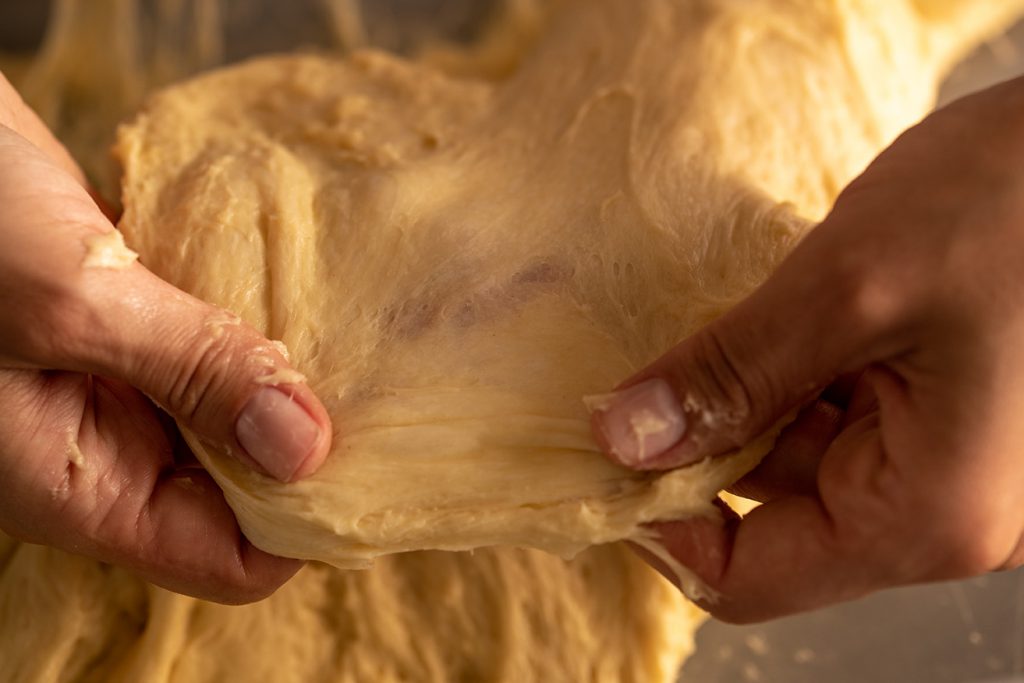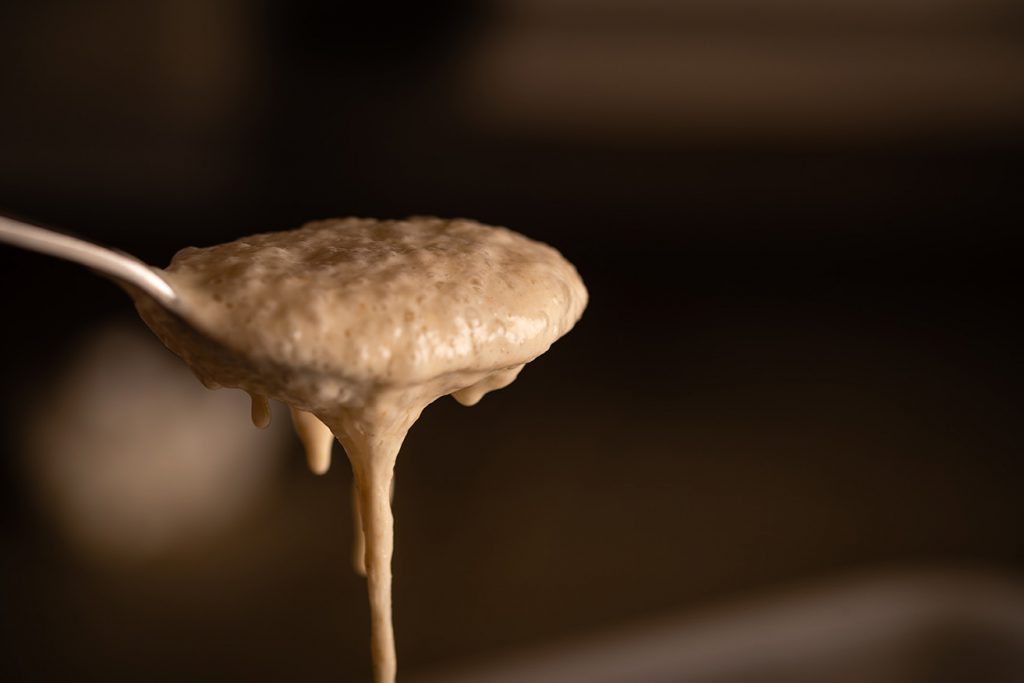Enriched doughs are doughs that are high in fats, sugars or dairy. Although they may seem very similar, they are quite different to lean doughs (that is regular doughs, like bread dough), which is why they require a slightly different approach when it comes to the sourdough starter used in these doughs as well. Enriched doughs require osmotolerant starters in order to have an optimum rise and taste. That is not to say you can’t use your regular sourdough starter to proof a brioche, but that it will render better results with an osmotolerant starter.

The idea is similar to using osmotolerant commercial yeast, the only difference is you won’t need store bought yeast, instead you’ll be making your own osmotolerant starter. The idea behind this is that sugar, in small concentrations, sustains and improves fermentation. However, when sugar concentration is higher, sugar can have the exact opposite effect on doughs, hindering fermentation. That is why you need an osmotolerant starter for enriched doughs (like brioche), as the regular starter you use for lean doughs can give you sub-optimal results. We will build this new culture in parallel with the regular sourdough starter you keep for breadmaking, please always remember to feed your mother starter and keep it safe and sound.

How it’s done
Building an osmotolerant sourdough starter is pretty simple and straightforward, you basically need to use sugar in it. You start off with your regular sourdough starter (preferably use a white bread flour starter, a rye or wholemeal starter might behave slightly different in this case) and proceed as follows. We recommend at least 3-4 repeated fedings before you go ahead and use the starter to make your enriched dough, as the culture will take some time to stabilize. It might even require more than 3-4 feedings, there have been cases where people have fed it 5-6 times and it didn’t raise at all and then, boom, it took off like nobody’s business. So just be patient while your culture stabilizez, it will happen.
- Day 1 – when your regular sourdough starter is ready to be fed, initiate off your osmotolerant starter by feeding it with
- White bread flour – 40 g
- Water – 40 g
- Regular sourdough starter – 10 g
- Sugar – 10 g
So you basically have a starter that you will feed in 1:1:4:4 (starter:sugar:water:flour). You can always adjust the amounts bets it suits you, by keeping the ratio but increasing or decreasing the amounts. If your starter is very quick to ferment between feedings, you can always increase the flour ratio (i.e. go with 1:1:5:5 in this case).
Also remember to feed and keep your regular starter the same you have kept it so far, these two cultures are different and you still need a regular mother starter you can use for breadmaking or for making other starters,
Then feed your osmotolerant starter every 12 hours using the same ratios as the ones mentioned above. So you will keep 1 part osmotolerant starter and you will feed it 1 part sugar, 4 parts flour, 4 parts water.
After feeding your starter 3-4 times (so approximately after two days of feeding it every 12 hours) your starter should be nice and bubbly and ready to use in your enriched doughs. Even if your starter shows signs of activity from the first feeding, we still recommend continuing to feed it 3-4 times before using it. The idea here is that during these repeated sugar feedings, the micro-organisms that thrive in a sugary environment will be auto-select and you will end up with a starter that is best for proofing enriched doughs.
You can build and maintain this starter only when required to make enriched doughs, so don’t worry about wasting flour on maintaining 2 different starters.
Happy baking!

